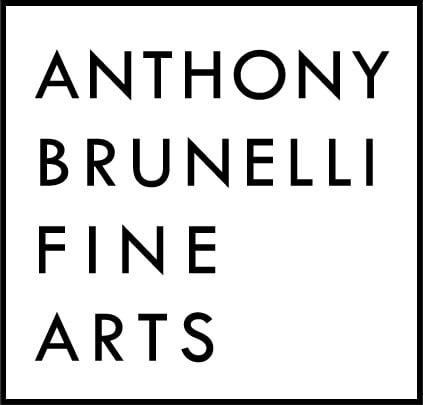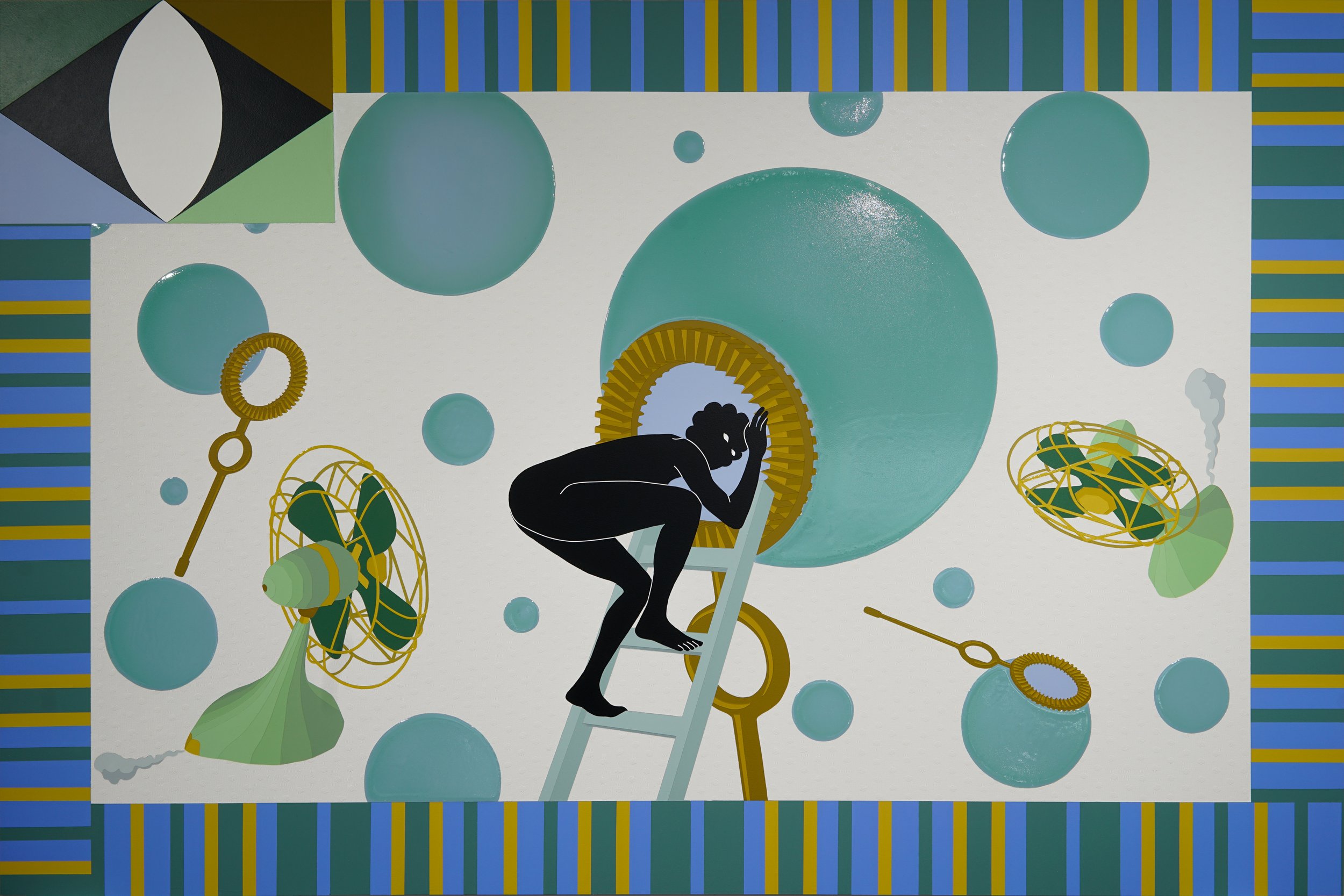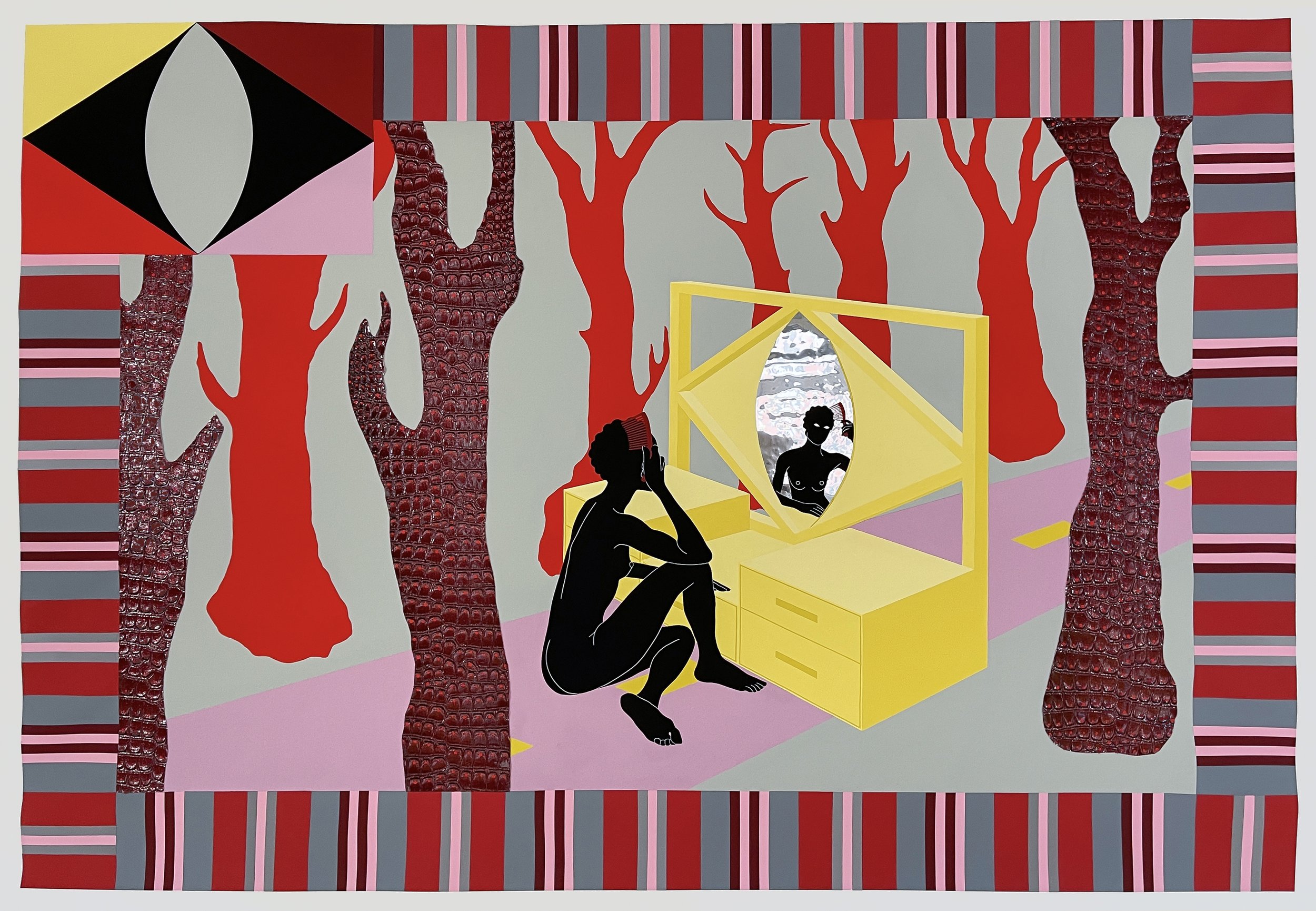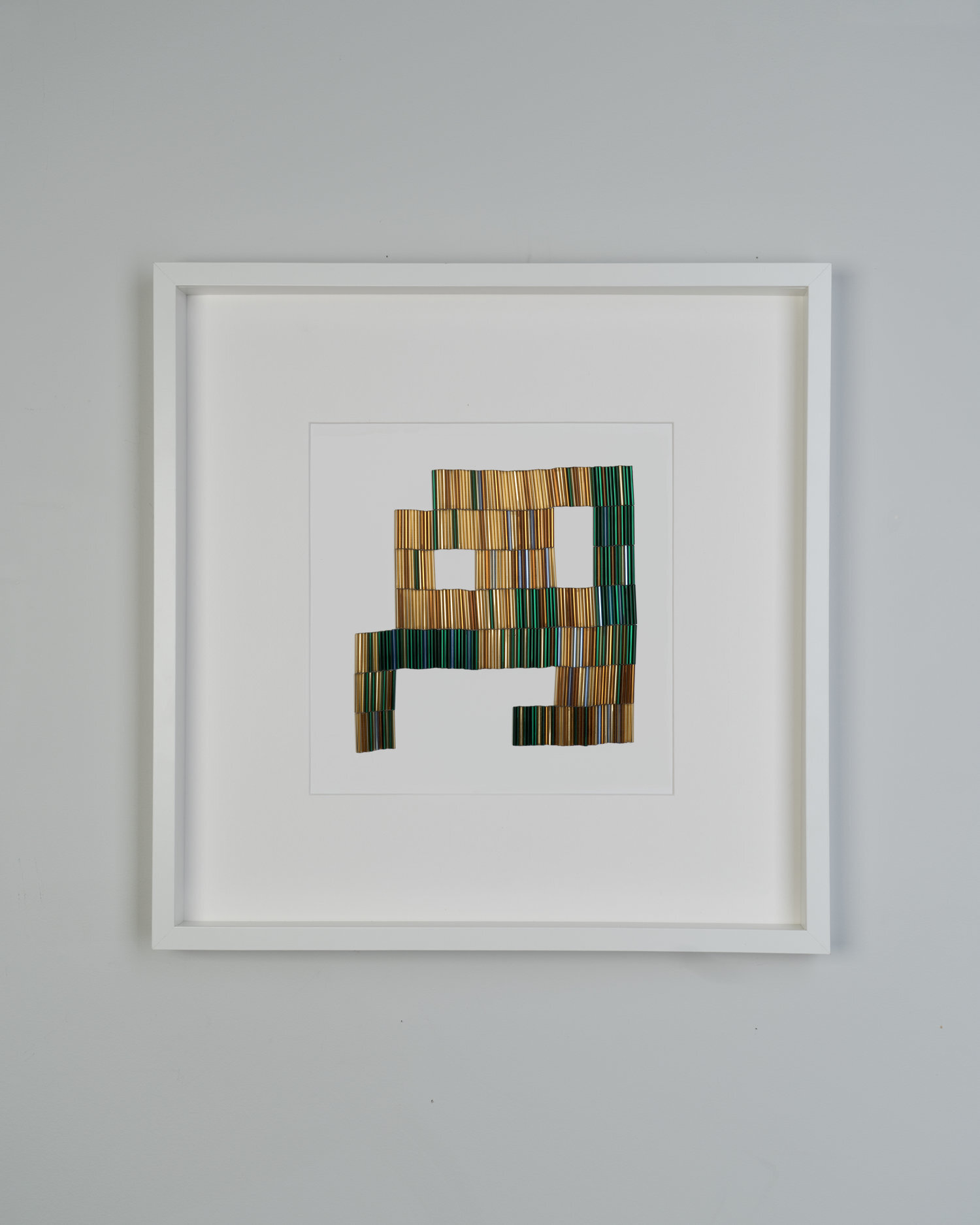AVAILABLE WORKS
RECENTLY SOLD
NA chainkua reindorf
Ghanaian, b. 1991
Na Chainkua Reindorf is a mixed media artist who creates large-scale tapestries and immersive sculptural installations. Her work is an exploration of and an ode to the rich cultural history of West African textiles, especially weaving traditions like Kente, and the complexities of masquerade dress. She purposefully incorporates contemporary materials into her work as a way to create new ways of using these historical textiles to explore ongoing social topics including gender and culture
She primarily uses acrylic and cotton yarn and threads, jute, sisal, wool and wire mesh for her tapestries, and often incorporates beads, sequins, dyed muslin, bamboo and vinyl into her installations. She has exhibited in institutions across the United States in Iowa, Illinois and New York, as well as in Lagos Nigeria and Accra, Ghana.
View artist CV here
View exhibition catalogue here
Artist Statement
“My work is informed and inspired by the visual language of West African textiles and the custom of using these textiles as a means of communication. I am equally fascinated by our widespread relationship with textiles almost exclusively as objects with specific functions. The work I make aims to alter our experience with, and reliance on, these materials as utilitarian by rendering them as meaningful aesthetic objects to be encountered.
As a cosmopolitan citizen, I have become acutely aware of the many nuanced differences between Ghana and the United States; both of which I consider to be home. I have found that by using commonplace materials in multiple manifestations, I can propose comparisons between aspects of the socio-political and cultural spheres of these two spaces.
I fold and mold, bend and coat, weave, and wrap to transform elements of the familiar. I deliberately employ materials, including jute, yarn, plastic lace and wire, that, like textiles, have charged cultural and symbolic histories of their own. This is particularly significant to my work because in moving between inter-continental cultural spaces, these transformed materials are given new meanings and thereby accumulate additional interpretive layers that operate both on the individual and collective level.”


























